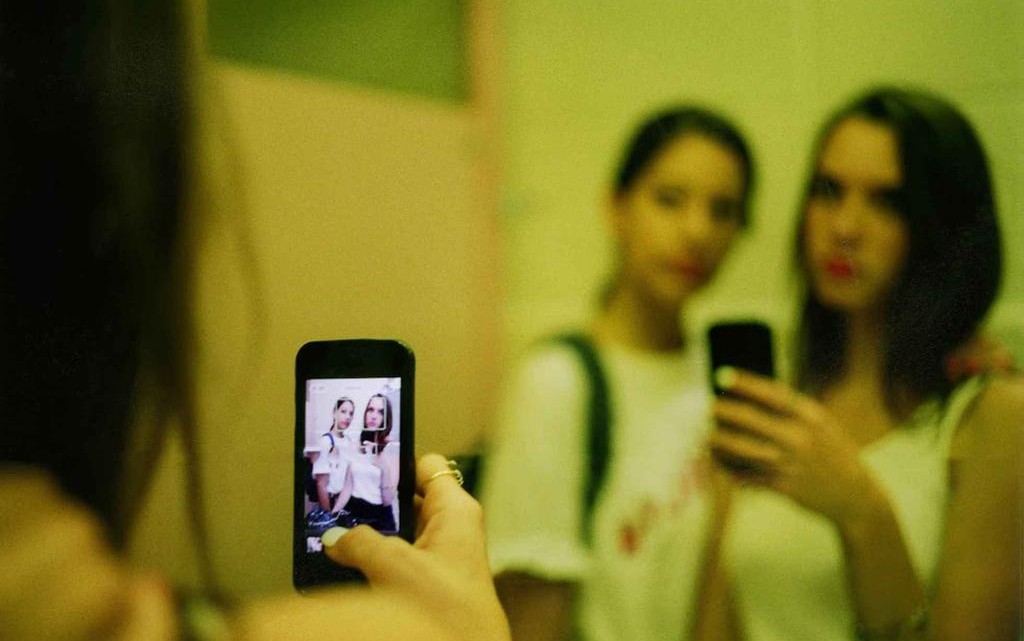Petra Collins is committed and crushing it. In 2014 she staged solo exhibitions of photographs and sculptures, routinely curated all-female group shows, put out major editorial and commercial projects, made a monograph, and recently began making her first short films. At 22 years old, this manic output demands recognition as a leader among a generation of young artists who are socially minded and comfortable creating across many platforms at once. Like Kern she attacks present taboos. Like McGinley her work is candid and fantastic. And like Rihanna, if she ain’t feelin’ it, she ain’t doin’ it.
I have like a dozen questions, or something. And also thank you for doing this and stuff. Have you read SFAQ?
I was just about to do it, yeah.
It’s really the best. It’s published in San Francisco, it’s completely free, and it goes to like a hundred cities in the world. Yeah, and I’m not really a journalist.
I know, it’s really weird interviewing people. I just did it for the first time recently.
Who did you interview? Someone you knew?
I spent like ten days traveling around the U.S. and shot a little documentary about girls who practice dance. My sister and I were interviewing girls, but it was my first time doing that. It was so cool. I did something else like that before on video, so I just started interviewing.
Are you super used to being interviewed yourself at this point?
Yeah, I am. I used to get super nervous, but now I’m used to it. I also really like talking, so it’s easy for me.
You’ve had a super crazy year. At the beginning of the year you curated the PussyPat show at Muddguts, and that’s where I (and lots of other people in New York) really first saw the scale of your vision. It felt like a whole scene really declared itself. You organized 24 artists, you had a manifesto, and it seemed like from the onset the community has been an integral ingredient in your work. I’m wondering if that was deliberately cultivated, or did it happen more by circumstance?
I guess it was deliberate because that’s kind of what I’ve been doing my whole life. I guess when I started off really creating, doing photography, and other—I was dancing and did video and stuff before that, but I kind of, like, didn’t really see a place or platform for my work so I just kind of wanted to create that for other young—not even young, but other talented female artists like myself. I guess just doing that show was a natural progression. I actually did one before that in September. I forget what month PussyPat was. March or something?
March, around the same time you did your solo show at Capricious 88.
Yeah, yeah, March. But I did this show in September actually. I don’t know if you saw it. It was called Gynolandscape. Along with my photography, curating is really important to me, and actually I went to school for two years for criticism in curatorial practice, and I guess in my practice I find it really important to collaborate. It’s just something I love to do.
I think the Muddguts show seemed more impactful because it was at an underground gallery, more like a show for our immediate generation and artists our age.
Yeah, totally, yeah. I always think that’s super important to do, because as an artist you’re always kind of preaching to the choir, so I find it important to do. Also, working with brands and doing more mainstream things is necessary if you really want to change things, because if you just stay in your little art world bubble you’re just going to, like . . . you’re only going to reach wealthy art people. You’re not going to reach the public, who my art is actually for. Yeah, doing it at Muddguts was super cool, and those are venues I really like working with.
How has shooting commercial and fashion work challenged your photography? Like a studio photo shoot for instance?
Something I love to do, but I’ve always—I mean, I just have to do it for money to live. But I don’t know, I’m really lucky now I’m at this point, and I think I was lucky in the beginning, where my creative direction wasn’t really challenged, and I do have more space to do what I want. Every kind of job that I’ve done I’ve sort of had that, which is cool, which is kind of rare. So I guess I have kind of a unique experience doing it, but even when I do fashion editorial work, it’s really on my own terms. I just did this shoot in i-D a couple issues ago that I really love which was just of my two of my best friends who did this really awesome clothing line and I shot a bunch of best friends. But it was girls ranging from every different kind of look and size and shape and whatever, and so I’m lucky that I get to do that as opposed to having to stick to normal commercial work. Sometimes it is draining, but then I just have to remember the money goes to making more artwork. So it’s totally cool, fine for me.
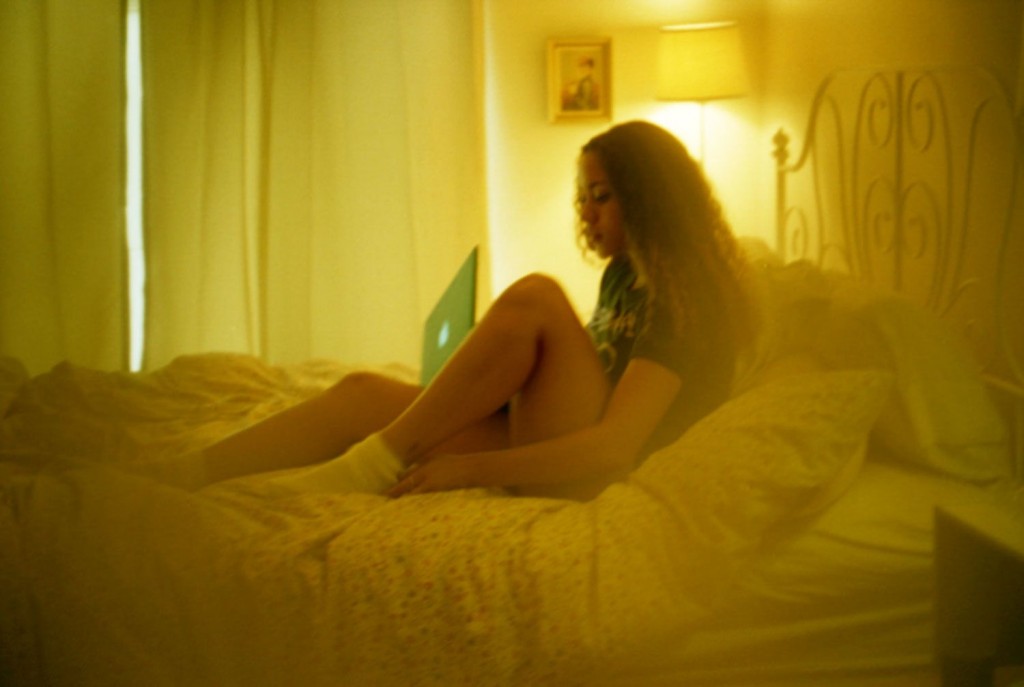
Jacqueline (Macbook), 2014. Digital archival photograph. Courtesy of the artist.
Does being put into that situation bring out unexpected directions in your work?
Yeah, usually I barely shoot in the studio. When I shot Tavi for the cover of Nylon, I got to buy backdrops, which I wouldn’t normally buy for myself. I don’t know—I don’t shoot studio and I also wouldn’t spend the extra money on it, but I kind of realized a new work I wanted to do out of it, so I used it as a resource to try out new things.
An obvious change in the commercial work is you’re shooting some boys as subjects.
I haven’t shot too many boys.
But you have lots of photos of that really dreamy boy, Michael [Bailey-Gates].
Oh yeah, Mike. Mike’s a really good friend of mine, and he’s also a super talented artist, so I guess I don’t even think of—I don’t know—I love him so much as a person that I totally overlooked that, but yeah, I shot Mike a bunch of times. I guess it’s the same as shooting any girl! Because I’m so close to him—it’s natural for me.
He’s overwhelmingly pretty so that probably eases the transition.
Yeah, he’s insane looking. I met him when I went on Ryan McGinley’s road trip with my other best friend, which is cool.
Yeah. You seemingly earned your education through old-fashioned apprenticeship as opposed to art college. Do you feel that kind of mentor/protégé style of learning has been crucial to your fast and super prolific output?
I mean—I don’t know—I did go to school for two years, which cost a lot, but I didn’t really go for photography. I have been making art since I was little; it’s just something I need to do, so nothing ever really stopped me. Having mentors or people to work with is really helpful for me, because working with people is kind of the only way I can do things. I’m really happy that I did get an education. I would love to go back to school; I just don’t have time or money. It’s unfortunate that school is so expensive, especially in the U.S. I’m from Canada—it’s cheaper there—but it’s so expensive here that I just, I don’t know. And I think it’s doing apprenticeships and stuff is the route that some people have to take, but I think learning from other people and working with other people is really important. Does that answer your question kind of?
Totally. Richard Kern and Ryan McGinley are really known for working in the field, like endless travel and constantly working in new locations. Has that strongly influenced your development of a practice?
Yeah. I first modeled for Ryan 2 years ago in May 2013.
Where did you guys go?
We went from New York to Oklahoma. We drove through the Appalachians and down the east coast. But I mean, it was really important for me to experience that kind of work ethic and lifestyle. He’s so lucky to be able to do that—to just do what he loves every single day. And when I came back I was like, that’s what I need to do and what I would love to do. And I actually kind of just did that. I was away for a month. I went on a little road trip from New Orleans to Las Vegas.
How did you travel?
We drove. I didn’t drive because I don’t have my license, but my sister and I are doing a little documentary about young girls in dance. She is practicing as a dance teacher and I used to—before I did photography I was set on being a dancer, it’s what I wanted to do. But I had a really bad injury and have weird things with my kneecaps so I had to stop dancing, but it wasn’t my choice. I was told by doctors to stop dancing, which was really intense for me, and I didn’t realize how intense until this trip. So I had a film crew filming and I was also taking photos and we were both interviewing girls and it was really amazing. To travel and work is what I love to do.
It seems apprenticing with two artists who are real-deal directors must have rubbed off on you. Is how to be a director not taught in school?
Yeah, it’s cool to see, I mean, it’s so important to learn how to be in charge of a team.
Leader.
Yeah, to be the leader. I just shot the documentary, but before that I shot this little art film for Dazed that is—I don’t know if I can talk about it, but I think it’s coming out soon. Basically. Aaron Rose was chosen to shoot something about the New York art scene and I was chosen to shoot something about the LA art scene. I don’t know if I’m allowed to talk about it yet—when does this interview come out?
I think kind of super soon.
Okay, maybe not.
You’ll totally see it before it comes out.
Oh, yeah. So I went from that and then straight into ten days of shooting this documentary and I guess I really—with my photography I’m not always having to boss a big crew around or whatever, because it’s just usually me and the model. This was kind of the first time where I really had to be in charge and seeing Ryan and Richard do it kind of helped with that.
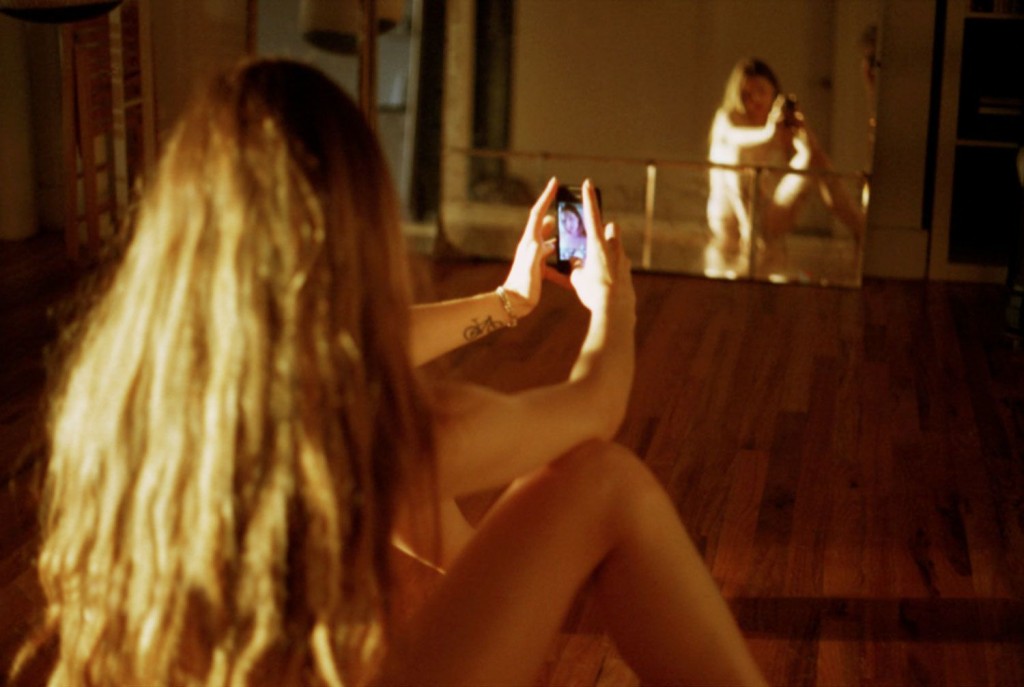
Selfie (Aly), 2014. Digital archival photograph. Courtesy of the artist.
Because you very quickly went from being an apprentice to a mentor. Now you’re a big figure to many artists, especially young women. What’s the most fundamental advice you hope to pass on to younger kids who are around shooting and creating?
Okay, there is this one Ira Glass quote that I really like that goes something like: “It’s easy to give up, but don’t give up after your first try.”
Like, don’t give up after failing?
Yeah! Yeah, don’t give up after failing. Because failing is the most important thing. How you act after you fail for the first time is what determines what your career will be like. If you stop doing what you do . . . I don’t know, you can’t give up. But that’s kind of cheesy. Do what you want to do! And keep doing it until you can do it for the rest of your life, yeah. It’s always weird for me to talk about this because I’ve been making art since I was really young, so it’s hard for me to put in words—it’s something that I physically need to do, and I feel like that’s what it’s like for a lot of people. It’s hard for me to separate it as something that you really try to do, but I guess that goes with not stopping, and also not letting things stop you. I didn’t grow up with a lot of money, so I got a job, I got this shitty retail job, and I spent all my money on film and developing. I did it all the time, until now, where I’m privileged enough to do it as my career.
Do you feel like you have more control or choice over what the direction of your art is now?
Yeah, for sure. I definitely do. Yeah, I think I always have because it’s just so much a part of me that it just has to—if it’s not my choice then it’s not me and then it totally defeats the purpose. So I think I have total control, yeah.
What do you think about the evolution of feminism in art and where do you see it standing now?
I think this year has been really awesome. There’s also been a lot of shitty things, but it’s been a big year for feminism and civil rights, and I think while filming this, the documentary I just shot—I always knew there was change in the air from all the things I saw—we met with a bunch of girls from all over, from different socioeconomic backgrounds, from whatever, and girls that have different awareness of things. Some girls had no idea who I was and were so removed from art, but the thing that all of them had in common was how empowered they were, which was really cool, and which totally changed the direction of the questions that my sister and I were asking, because my sister and I grew up overthinking our bodies and ultimately hating ourselves and whatever, and seeing all these girls speak so positively about themselves and about other girls just made me realize that things have changed. And I think a lot of feminism has gone into the mainstream, and I think that’s why we see it so much in art. I don’t know, I think it’s really exciting, and I think a lot of girls are getting a chance to do what they want. So this year has been kind of crazy for that.
Do you see yourself as part of or as contributing to the lineage of feminism?
Oh yeah, I think I grew up in this fourth wave. And my approach, and others’ like Tavi, have a different approach than third-wave feminism, so I think it’s just natural for that to happen. Yeah, I think so. I also grew up with the Internet and all these different tools, so I think it’s definitely a fourth wave, for sure, and I think I’m part of it.
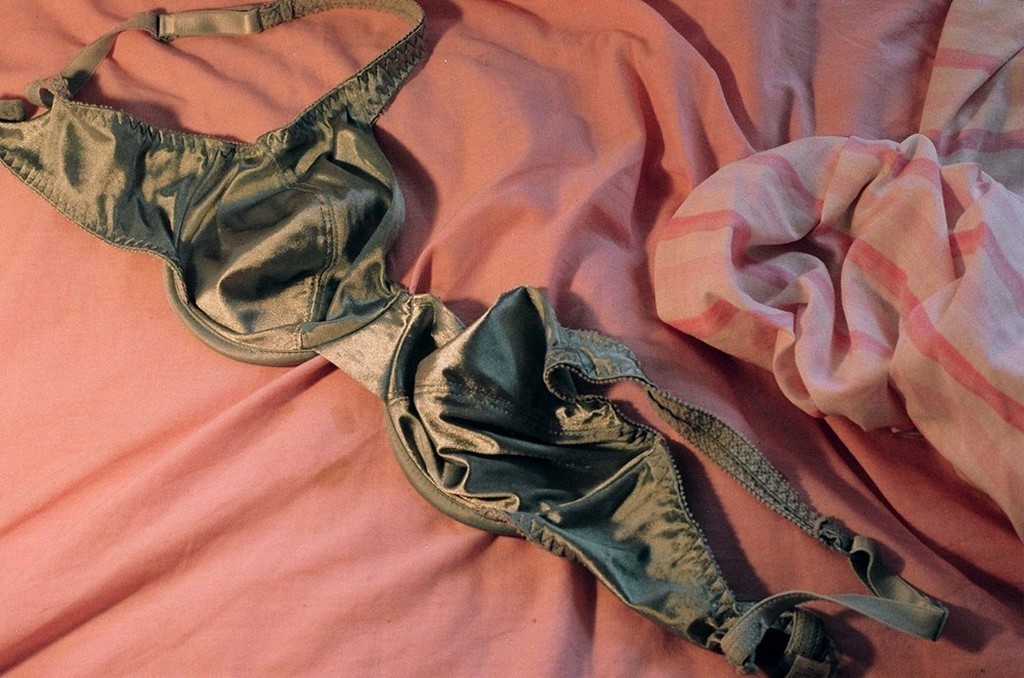
Talvi Bra, 2011. Digital archival photograph. Courtesy of the artist.
Do you see your work exploring feminist issues politically, socially, aesthetically, or culturally?
It’s all kind of one big thing. I mean my work just comes from—I guess the way I see the world is through a feminist lens so whatever I shoot has that. But it doesn’t mean I’m always thinking of what radical art thing can I do to make something crazy; it’s just the way I think normally. I totally forgot what the question was!
It was if any one of these things are more important in your work— dealing with the issues politically or socially . . .
Yeah, it’s just like all one big thing.
So much of your subject matter has to do with a young/teenage aesthetic. As you become more of a woman and less of a teen has it changed your ideas or perspective about the subject matter?
It totally has, I can see it. I just put out a book of the past years of photography after my first show and I could really see the progression of my work. I don’t know what that will hold for the future, but I just know as I grow I have a better perspective. I look back on my life and look back on what I was thinking at the time and the work I was creating. But I don’t know what will happen in the future. Is that okay?
And you’ve been making sculpture and curating performance. Do you see yourself doing more of these? And also, what attracts you to neon lights?
Yeah, I definitely want to do more of that. I have always been a multimedia artist. Photography was just the thing that I just did most, so now I’m finally getting a chance to move back into doing more. It has to do with time and space and money to be able to create sculpture. Photography was definitely the easiest and fastest and needed the least amount of space to do. But yeah, I love neon because it’s such a weird old medium, and it’s usually used to sell things, which is interesting. Neon for me is the store signs or signs for strip clubs or whatever, and what I really like is taking that medium and putting my sort of 21st century girl experience into it. For me it creates this weird, confusing thing when I put a really sad text message or certain Rihanna lyrics into this medium that already has so much meaning behind it. Neon is super weird and romantic. So it’s exciting to put my own things in it. I guess it has a lot to do with seeing myself in a landscape, or seeing other girls. I always think of this one—I refer to this so much, but it was just the most impactful for me—this Virginia Woolf essay called The Three Guineas, where—have you read it?
No, I haven’t.
Well, the essay is about this soldier, this man, who’s writing to a woman—I don’t know if it’s necessarily Virginia Woolf—and he’s asking her why we have war and what he can do to stop war. He doesn’t understand the purpose of it, and I read this so long ago, but maybe he also felt, like, what can women do? The thing that stuck out most in my mind is when she explains that women don’t create war because they were never part of that landscape. They could never vote and they never had human rights or a public voice, so they don’t have this nationalistic view of things. There’s this other quote that I really love, it’s from a documentary called Miss Representation, which is from four years ago about women in the media, and this one woman says in it that “you can’t be what you can’t see.” But anyway, back to the neon, and back to creating movies and stuff. It’s exciting to see myself in these old things that I would never be a part of. I mean, I kind of did the same thing when I was shooting this documentary. I would always show the girls the monitor to show them what the footage looked like because it’s really amazing to see yourself in this medium that you don’t really see people like yourself in. Because we shot it with an amazing camera, it was movie quality and whatever. But yeah, long answer for a short question about sculpture and stuff.
Those are the best answers. Yeah, all of your work—the photos, everything—has a really cinematic vision to it. Last night I was o.d.-ing on your photos and in the middle of this really big collection from the first Rookie Yearbook, there was a series of these portraits of a super melancholic girl with pink hair. It must be from four or five years ago, but some of the photos were subtitled and the subtitles really revealed these narratives in the photographs that maybe were hinted at, but were nowhere near as clear without. Do you often have a bigger fictitious story running through your mind when you’re shooting?
Not really, but I approach composing the image in a cinematic way. Before I did photography I really wanted to do film, but that’s something that, for a young person, is really hard to do because of time and budget and crew.
It’s the ultimate art.
Totally, so I guess my approach for each photo is to get the most feeling and emotion and everything in this one take. I don’t necessarily have this other fictitious tale, but I really put into them a lot of whatever emotion is in the room, or is in my subject, or is in me, and it really comes out in the photo, and I think it really tells whatever is going on at that time.
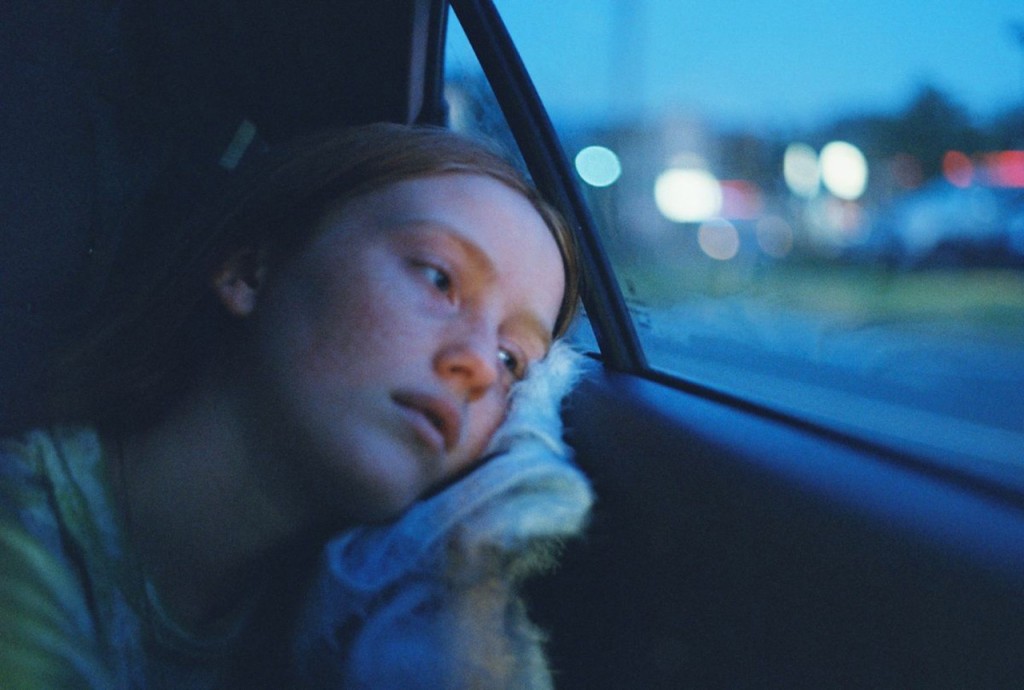
India Drive at Night, 2014. Digital archival photograph. Courtesy of the artist.
What shows or artworks do you feel marked this past year? Were you in Miami a couple weeks ago?
Yeah, I was in Miami. Actually, this is so crazy—I didn’t see anything there. I didn’t see any of the artworks because I was working the whole time, and I was kind of stuck where I was! I’m just going to be vague here because I can’t think of anything specific, but I think the most important thing in art this year was the DIY movement from young female artists. There are so many collectives and shows and art that all these girls are making that have come up in the past year. I think it’s all this—not net art, but girls putting their work out on Tumblr and whatever. It’s really exciting because it’s this new platform and stage that doesn’t necessarily have to be in big money-driven galleries. So I think that’s the most important thing.
Do you have anything you want to add on your own? Any questions I should have asked?
I don’t know, I think you covered it pretty well, and I’m glad you didn’t ask all the questions I always get asked.
What are those?
No, no, no. I know, we always talk about the future.
What does your future look like?
Sometimes I get asked what I think about nudity or what I think about this or that. Such tired, stupid subjects.
Maybe ‘cause we’re sorta close in age so we have similar perspectives.
Yeah, I think so. The difference between people who are older who interview me and the things that they pick up is so funny. We’re all over nudity and over all of it, it’s like not a second thought. But yeah, it’s really funny.
It’s life after Ryan McGinley.
Yeah, exactly. I don’t think twice about a naked body, it’s just normal. I mean, especially since I spent three weeks, exclusively being naked doing this—sitting in a car naked, or like playing, I don’t know, whatever, Clue, naked. I don’t really care about it at all.
